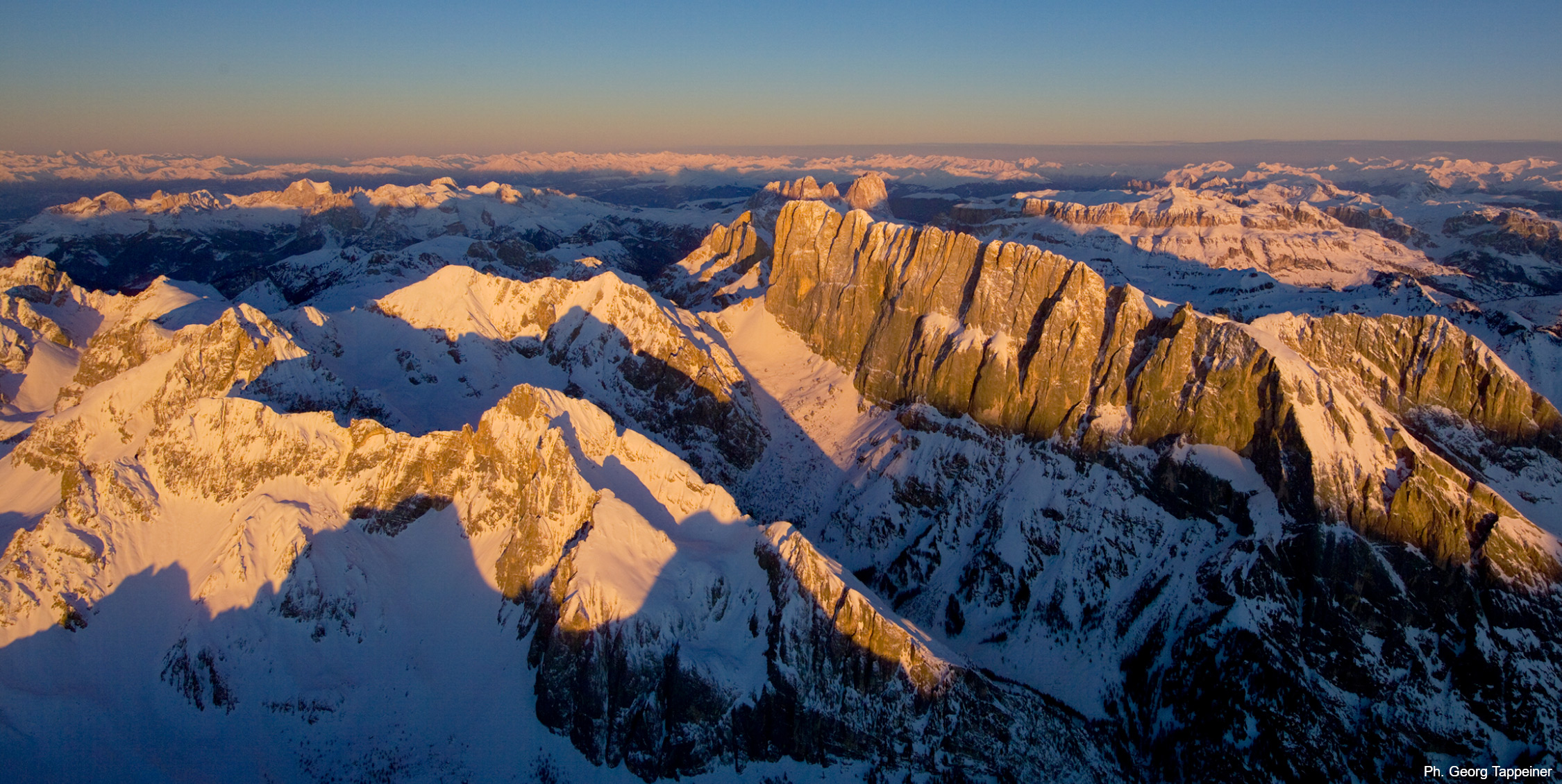Marmolada
The 2,208 hectares of land divided between the Provinces of Belluno and Trento, make up the Marmolada System, known as the Queen of the Dolomites. This System includes the highest peaks in the whole region, among them Punta Penìa, at 3,343m above sea level, the highest mountain in the Dolomites Unesco World Heritage Site, making this System unique for the beauty of its landscape.
Marmolada is a mountain of contrasts. The softly rolling contours at its foot, covered in woods and meadows, are abruptly broken by the dizzying height of its upper slopes with their pale calcareous rock and breath-taking crags. The northern face, home to the most extensive glacier in the Dolomite region, slopes down gracefully to the banks of the little lake of Fedaia. The southern face is one of the most challenging routes, much appreciated by the world’s mountaineers, a wall of nearly 1,000 metres, starting from the Val Ombretta screes, standing out against vertiginous peaks.




